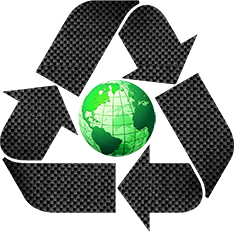Senator Maria Cantwell from Washington state has taken a bold step in the fight against environmental waste by introducing the Carbon Fiber Recycling Act of 2015. This proposed legislation is not just a policy move—it's a call to action for innovation, sustainability, and responsible resource management. The bill aims to support the development of advanced carbon fiber recycling technologies by directing the U.S. Department of Energy (DOE) to conduct a comprehensive study on the technology, life cycle, and economic implications of recycled carbon fiber. The initiative also encourages collaboration between the DOE, major industries like automotive and aviation, and the Composite Recycling Technology Center (CRTC) in Port Angeles. Together, these stakeholders are expected to develop a pilot project that showcases the potential of recycled carbon fiber. This kind of partnership is crucial, as it brings together expertise, resources, and real-world applications to drive meaningful change. As the demand for carbon fiber continues to rise—especially in sectors like aerospace, automotive, and renewable energy—the amount of waste generated is growing at an alarming rate. Millions of pounds of carbon fiber composites end up in landfills each year, contributing to both environmental and economic challenges. The CRTC plays a vital role in addressing this issue by transforming waste into valuable materials that can be used in new products, from vehicles to construction and even clean energy systems. Recycling carbon fiber isn't just about reducing landfill waste; it's a key strategy in lowering carbon dioxide emissions. By reusing materials instead of discarding them, industries can significantly cut down their environmental footprint. HJ3 Composite Technologies, a leader in the field, exemplifies this commitment. They ensure that all excess carbon fiber scraps from their projects are collected, inspected, and repurposed for future use. Their proactive approach highlights the importance of sustainable practices in manufacturing. Looking ahead, HJ3 is actively seeking partnerships with industry leaders to expand its recycling capabilities. The goal is to create a more efficient and scalable system that benefits not only the environment but also the economy. With policies like the Carbon Fiber Recycling Act of 2015, the path toward a circular economy becomes clearer—and more achievable. Key Takeaways:
The machine also has a self-cooling function, especially active abundant hand processing thermoplastic, fibrous material use and chemical heart medicine, seasoning, paint, pigment, dye, feed, plastic, carbon black, Catalyst, aluminum hydroxide, alumina, talc, mica, graphite, AC foaming agent, petroleum coke, pesticide, dye, coating, flame retardant, carbon black, electronic materials, rubber, metallurgy, ceramics, food, building materials, ore, cement, refractory materials, inorganic minerals, cereals and other ideal equipment for crushing.
Through the high-speed rotation of a special shape of the moving disk, it is squeezed, collided and cut for many times, so as to achieve crushing. The material receives impact and shear between the high-speed rotating rotor and the stator of the toothed lining. The crushed material enters the grading area driven by the air flow. The qualified material is collected by the cyclone and dust collector, and the unqualified material is returned to the crushing area for crushing.
â—1. The machine has compact and reasonable structure, small size, low energy consumption, high efficiency, stable speed, low noise, reliable sealing, no dust pollution, simple installation, easy disassembly and repair, convenient replacement of damaged parts;
â— 2.The equipment adopts the specialty of domestic and foreign dry mechanical crusher, according to the need to use large air volume into the cavity or water jacket cooling, in order to reduce the crushing heat, to prevent the shortcomings of material particles sticking to the wall, sticking to the crushing surface;
â—3. Crushing, grading machine, can reach the fineness of the material timely distribution out, avoid over crushing, material size distribution is narrow;
â— 4.Suitable for processing a variety of materials in various industries, without stopping, can adjust the strength. Product particle size uniform, fineness up to 10-5um3
5 Dry materials with water content less than 10% can be crushed by this machine: special materials with water content up to 15%, such as whole wheat flour;
â— 5.For the aggregate, has a good scatter and dispersion function, with automatic screening is not easy to crush the function.
Food Machine Additive Grinder and Grinding,Food Machine Additive Pulverizer,Food Machine Additive Jet mill Shandong Jing Xin Powder Equipment Technology Co., Ltd. , https://www.jxpowder.comBy Elizabeth Rosenberg

Senator Cantwell Unveils Carbon Fiber Recycling Act of 2015: A Step Toward a Greener Future